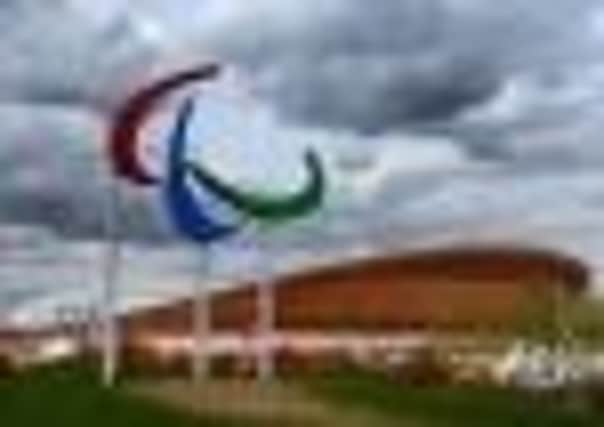Courage the name of the Games at Paralympics


The Olympics have left a great sense of achievement across the country through the success of athletes from Jessica Ennis and Mo Farah to Sir Chris Hoy, but what made the Olympics come alive for the vast majority was the back-page stories that emerged through the British media’s in-depth coverage of the Games. Every athlete has a story to tell, of incredible commitment, courage and breaking down of barriers. Nowhere is the colour and variety of back-page stories more stunning than in the world of Paralympics.
The Olympians such as Hoy, Usain Bolt, David Rudisha and Bradley Wiggins attract the big global headlines, rightly so, as the fastest and strongest athletes in the world, and the hope remains that the 29 gold medals of Team GB can inspire many thousands more to push themselves to those limits. But, what of the millions of disabled people around the world and across the UK and Ireland? They need inspiration too and there is no better opportunity to enrich the lives of people with disabilities than in the sporting arena that will lift its lid next week.
Advertisement
Hide AdAdvertisement
Hide AdFrom Mike Kerr, the Glaswegian, who broke his spine diving into a pool and now speaks of how his life has been transformed in a positive way through becoming one of Britain’s leading wheelchair rugby players and travelling the world, to Libby Clegg, the Borders sprinter who has Stargardt’s Disease which means her eyesight is disappearing, and yet one would struggle to find a more determined athlete in recent months as she focuses on securing Paralympian gold, there are a multitude of stories to enthral over the next two weeks.
Baroness Tanni Grey Thompson took disabled sport deeper into the British consciousness through her success. It was not her battle to overcome a life in a wheelchair in itself, but her drive to become a leading British athlete in her own right and claim 11 gold medals, four silvers and a bronze was what enabled her to transcend disabled sport. She has been a leading figure in the public domain, but also worked hard to encourage athletes away from the media glare, attending races in Scotland regularly and working with a number of wheelchair racers. But new faces have emerged and they will become more well known in the coming fortnight, much in the way that Mo Farah, Greg Rutherford, Michael Jamieson and Scott Brash were little known before the Olympics began in July.
And this is where it started. The Paralympics idea really began in 1948 when, to coincide with the Olympics coming to London, 16 ex-servicemen and women with spinal injuries took part in an archery competition, organised by an innovative German neurologist. At London 2012 more than 4,000 dedicated athletes will compete over 503 events in 21 sports.
Now the biggest names in Paralympic sport are global stars, with amputee sprinter Oscar Pistorius admired the world over for breaking barriers, while American swimmer Trischa Zorn, who was blind from birth, has amassed 55 medals, including 41 golds. Both, though, owe a debt to that German doctor, Sir Ludwig Guttmann, and his theory that sport could play an important part in physical and mental rehabilitation.
As his ideas spread to hospitals around the country and beyond, the Paralympic Games was born.
The first official Paralympics were held in 1960 in Rome with participation open not only to the war wounded, although it was restricted to those in wheelchairs.
Around 400 athletes from 23 countries competed across eight sports, with every athlete guaranteed a medal as there were no more than three individuals or teams in each event. Great Britain finished second to Italy in the medal table, winning 55, including 15 golds. Among the champions was Margaret Maughan, who had been paralysed in a car accident. She won Britain’s first Paralympic gold medal in archery and went on to take another in swimming as the only competitor in the 50 metres backstroke race. She finished her 20-year Paralympic career with four golds in four sports.
Weightlifting, and wheelchair racing, were added to the programme in Tokyo in 1964. The 1988 Games in Seoul proved another landmark - the first time the Paralympics were held in the same venue and using the same facilities as the Olympics. London 2012 will be the 14th edition of the Paralympics - and quite possibly the best yet.
Advertisement
Hide AdAdvertisement
Hide AdThe identities of the headline-grabbers will start emerging from Wednesday onwards, but there are few things which epitomise hope and optimism in sport better than the radiant smile of swimmer Eleanor Simmonds.
Simmonds, who suffers from achondroplasia, a disorder of bone growth which causes the most common type of dwarfism, has taken over the mantle as Britain’s most recognisable Paralympian after winning two gold medals in the 100m and 400m freestyle in Beijing aged just 13, by some distance the youngest member of Britain’s Olympic and Paralympic squads in 2008.